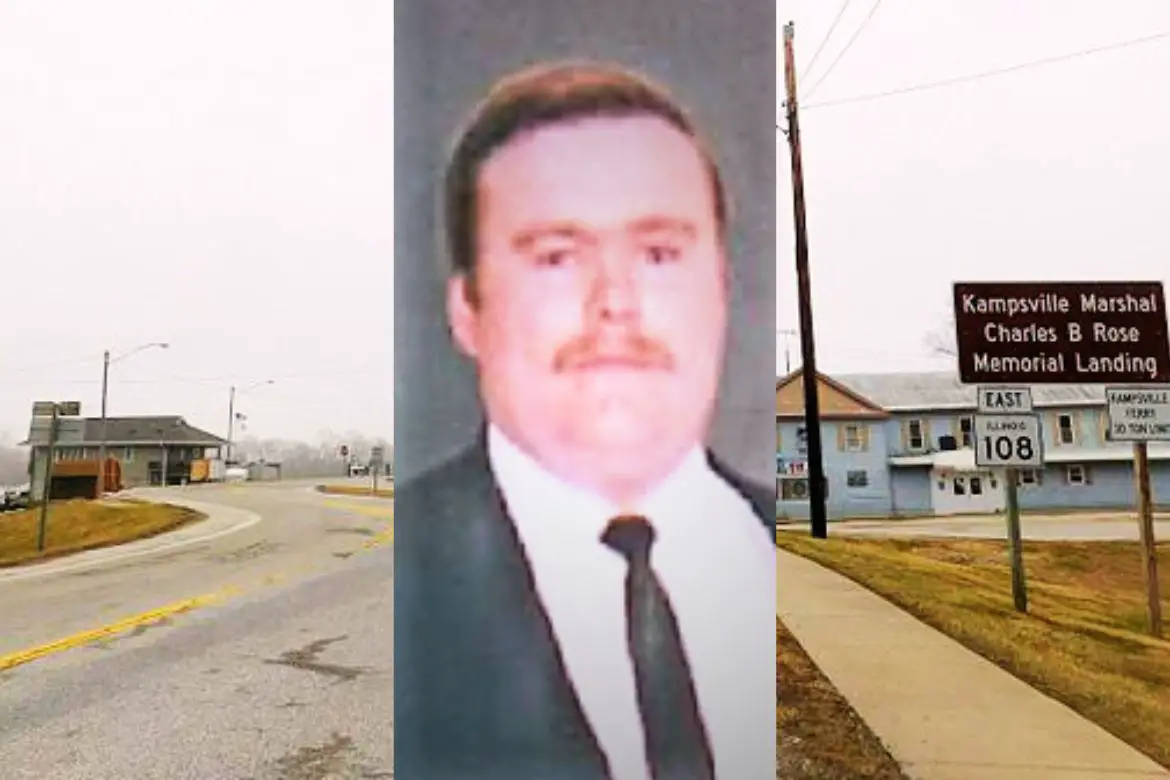Kampsville, Illinois is a village situated on the west bank of the Illinois River. Initially named Beeman’s Landing after James L. Beeman, a ferry operator, the name changed to Farrowtown after Stephen Farrow acquired the ferry from Beeman. In 1857, when the post office was established, the name Vedder was adopted. Finally, on March 6, 1872, the name Kampsville became official, honoring Michael A. Kamp, the village board president, who also served as postmaster at Silver Creek, located north of Kampsville. (Callary, 2009)
Today, the village serves as the headquarters for the Center for American Archeology, an organization focused on educating and conducting research about the Native Americans and European settlers of the area. The Kampsville Ferry provides a crossing over the Illinois River, linking Kampsville with the rest of Illinois Route 108 in Greene County. This ferry operates free of charge, running 24 hours a day, seven days a week, and is one of two permanent ferries managed by the Illinois Department of Transportation. (Great Rivers and Routes Tourism Bureau)
Great Flood of 1993
The Great Flood of 1993 was caused by extreme weather and hydrologic conditions, beginning with a rainy fall in 1992 that elevated soil moisture and reservoir levels in the Missouri and Upper Mississippi River basins. The flood affected nine states over 400,000 square miles, with some areas experiencing flooding for nearly 200 days. (National Weather Service)
Persistent weather patterns led to significant storms from late spring through summer, inundating the Upper Midwest with over 4 feet of rain in some areas. From June to August, rainfall exceeded 12 inches across several states, with unusual daily rain patterns contributing to severe flooding from May to September. The flooding resulted in 50 fatalities and approximately $15 billion in damages, with many levees failing along the rivers.
Transportation was severely disrupted, halting barge traffic for nearly two months and affecting bridges along the Mississippi River. Iowa experienced record rainfalls in early July, leading to significant flooding, particularly in Des Moines, and causing record-high water levels at St. Louis on July 20.
Along the Illinois River in Kampsville, many local roads were closed, forcing residents to drive alternate routes.
Murder of Stuart Craigmiles
The Craigmiles family, consisting of Stuart Anthony “Tony” Craigmiles, his wife Cindy Parker Craigmiles (now Thurm), and their two small children, lived about four to five miles west of Kampsville in a remote area only accessible through county back roads during the Great Flood.
Tony worked north in Mt. Sterling as a correctional officer at Western Correctional Center, a medium-security prison.
On June 30, 1993, a still-unidentified killer(s) shot Tony, 27, in the head, instantly killing him. Cindy found him dead when she returned home around 5:30 p.m.
While the Calhoun County Sheriff’s Office claimed in 2019 that it had a “large file on the murder,'” (Davenport, 2019), there is very little public information on Tony’s killing, so the motive for the murder is unclear. The case was reopened in 2007, and several tips came into the Calhoun County Sheriff’s Department two years later, but investigators never charged anyone with a crime. It remains unsolved nearly 32 years later.
Cindy remarried and now resides in Medora, Illinois.
Anyone with information related to Tony’s murder may call Two Rivers Crime Stoppers at (800) 300-2590.
TCD’s Thoughts
The following is strictly the opinion of this author.
I live in Illinois, and I remember the Great Flood very clearly. It was awful, and it felt like the rain would never stop. The summer was very long, and I was pregnant, too!
I believe Tony knew his killer and that the killer had been to his home before. The murder was a targeted assassination, not a random act because Tony’s home was very remote. The likely suspect seems to be his wife, Cindy, but who knows?
She remarried, but I have no idea how soon after Tony’s murder she did. However, what I find interesting is her Facebook page. Her husband was gunned down in cold blood, but there is not one picture of him on her page. She has tons of public images, but not one is of Tony, not even on the anniversary of his murder. I find that pretty telling. And don’t tell me, “Well, it’s been over 30 years.” So the f*ck what? That point is moot.
Another interesting thing is that not even Tony’s children appear to be seeking justice for their father. No Facebook pages were created for his case. NONE. If that had been my father, I would want justice. If that had been my husband, I would want justice for him. WTF.
Ahh, I can hear all the podcasters hating my “speculation.” And how disrespectful I am to the families. Well, some deserve it.
It’s also lovely that nobody gave a better picture of Tony than what is on this page.
Sources
Callary, Edward. 2009. Place names of Illinois. Chicago: University of Illinois Press, p. 181.
Davenport, Cory. “Cracking Open a Cold One: Tips Sought for Calhoun County Murder During Great Flood of ’93.” RiverBender.com. February 14, 2019. https://www.riverbender.com/news/details/cracking-open-a-cold-one-tips-sought-for-calhoun-county-murder-during-great-flood-of-93-33704.cfm
Image of Tony Craigmiles:
“Kampsville.” Great Rivers and Routes Tourism Bureau. https://www.riversandroutes.com/cities-towns/visit-calhoun-county/kampsville/
“The Great Flood of 1993.” National Weather Service. https://www.weather.gov/dvn/071993_greatflood
“Stuart Anthony “Tony” Craigmiles.” Illinois State Police. https://isp.illinois.gov/UnsolvedCrime/UnsolvedCrime/58



